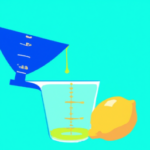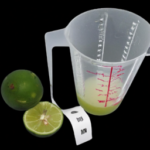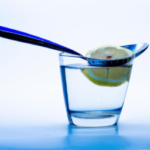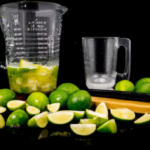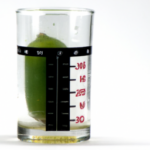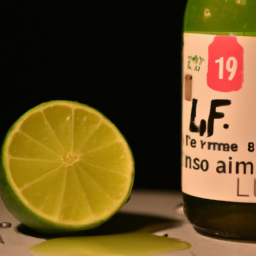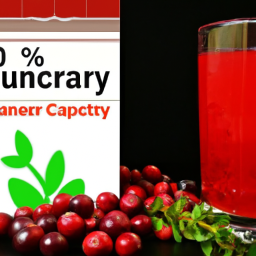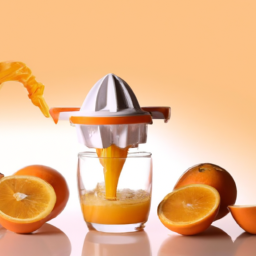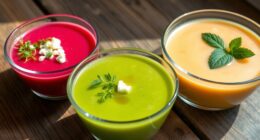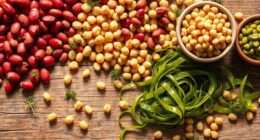Lemons are crucial in many cooking scenarios, adding a tangy and bold taste to dishes and drinks. But it can be frustrating when you cut into a lemon and only get a small amount of juice. As someone who loves using lemon juice in my cooking and beverages, I have spent a lot of time researching and trying out different methods to get the most juice out of lemons.
In this article, I’ll be sharing my tips and tricks for maximizing juice output and getting the most out of your limes.
First things first, understanding the anatomy of a lime is key. Limes are made up of juice-filled sacs called vesicles, which are surrounded by a tough membrane. To get the most juice out of a lime, you need to break down that membrane and release as much juice as possible.
But that’s just the beginning. From choosing the right limes to using the right tools, there are a variety of factors that can impact how much juice you get out of a lime.
So let’s dive in and learn how to get the most out of this tart and tasty citrus fruit.
Key Takeaways
- Choose ripe limes based on color, texture, weight, and season to ensure maximum juice output.
- Use various techniques for extracting juice, such as cutting quarters, using a citrus juicer or reamer, hand-rolling, and using a fork or spoon to press down on the pulp.
- Store limes properly in a cool and dry place, keep them in airtight containers or plastic bags, and use leftover peels for various purposes.
- Maximize the use of lime juice by incorporating it into dishes, cocktails, and vinaigrette dressings, as well as freezing it in ice cube trays or resealable plastic bags and storing it in the fridge for up to a week to reduce waste.
Understanding the Anatomy of a Lime
You’ve probably held a lime before, but have you ever really looked at it? Take a closer peek and you’ll see that it’s made up of juicy segments surrounded by a thin layer of bitter pith and a sturdy rind.
Understanding the layers of a lime is crucial when it comes to maximizing its juice output. The juicy segments, which are divided into smaller sections called carpels, are what contain the majority of the juice. The pith, on the other hand, is the white layer that separates the juicy segments from the rind. It’s bitter and doesn’t contain any juice, so it’s best to avoid it as much as possible.
When it comes to picking the perfect lime, color and texture are important factors to consider. A ripe lime should have a bright, vibrant green color and a slightly soft texture. The rind should also be smooth, firm, and free of any blemishes or soft spots.
A lime that is too hard and has a dull, yellowish-green color is likely underripe and won’t produce as much juice. By choosing the right limes, you’ll be one step closer to getting the most juice out of them.
Choosing the Right Limes
When it comes to choosing limes, it’s important to know how to identify the ripe ones from the unripe ones. As someone who loves to cook with lime, I always look for the juiciest limes possible.
In this discussion, I’ll share some practical tips on how to choose the best limes for your culinary needs.
Identifying ripe vs. unripe limes
Feeling a lime’s skin before squeezing it is like reading Braille on a fruit. To identify whether a lime is ripe or not, I use a combination of taste testing and visual cues.
Firstly, I take a small bite from the outer layer of the lime. A ripe lime should taste tangy and acidic, but not overwhelmingly sour. If the lime is unripe, it would taste bland and lack the distinct citrus flavor.
Apart from taste, visual cues are also essential in identifying ripe limes. A ripe lime is usually bright green in color, with a smooth and glossy skin. The skin should be firm to the touch, but not too hard or too soft. If the lime is too hard, it’s likely unripe, while a soft lime indicates that it might be overripe.
By using taste testing and visual cues, I can determine whether a lime is ripe and ready to be juiced.
When it comes to getting the most juice out of limes, choosing the juiciest ones is crucial. To do so, I look for limes that are heavy for their size and have a thin skin. These types of limes usually contain more juice, and the thin skin makes them easier to squeeze. Additionally, I choose limes that have a slight give when I press them gently. This indicates that they are ripe and ready to be juiced.
By selecting the right limes, I can ensure that I’m getting the most juice possible for my recipes.
How to choose the juiciest limes
To choose the juiciest limes, look for ones that are heavy for their size and have a thin, glossy skin that gives slightly when pressed. This indicates that the lime is full of juice and has not dried out.
Avoid limes that have soft spots or are discolored, as these are signs of over-ripeness or decay. Also, don’t be fooled by the size of the lime; larger limes don’t necessarily mean more juice. Instead, focus on the weight and texture of the fruit.
When selecting the juiciest limes, there are a few tips and tricks to keep in mind. First, try to buy limes that are in season, as they’ll be at their peak freshness and flavor. Additionally, don’t store limes in the refrigerator for too long, as this can cause them to dry out.
Finally, remember that the best way to get the most juice out of your limes is to use them when they’re fresh. By properly selecting your limes, you can ensure that your lime-based dishes and drinks will be bursting with flavor and acidity.
Now, let’s move on to preparing your limes for optimal juicing.
Preparing Your Limes
When preparing limes for juicing, there are a few key steps to follow. First, it’s important to wash the limes thoroughly to remove any dirt or debris that may be on the skin.
Then, you’ll want to cut the limes in a way that maximizes the amount of juice you can extract.
By following these steps, you’ll be able to get the most out of your limes and create delicious, flavorful drinks and dishes.
How to wash your limes
One effective way of maximizing the amount of juice you can extract from your limes is by thoroughly washing them before use. Lime washing techniques are important because it helps remove any dirt and bacteria that may be present on the surface of the fruit. This is especially important if you’re going to be using the zest of the lime, as it’s the outermost layer of the fruit that comes in contact with dirt and other contaminants.
Another benefit of using organic limes is that they’re free from any harmful chemicals that may be present in conventionally grown produce. When you wash your organic limes, you can be sure that you’re not exposing yourself or your family to any unnecessary toxins. To wash your limes, simply rinse them under cold running water and gently scrub the surface with a clean brush.
Now that your limes are clean, it’s time to move on to the next step: cutting them for maximum juice output.
How to cut your limes for maximum juice output
Maximizing the amount of juice you extract from your limes is all about cutting them in a specific way that ensures the juice flows freely, so start by slicing off the ends of your lime. This allows you to see the shape of the lime and makes it easier to cut into halves or quarters. When cutting, use a sharp knife and apply a bit of pressure to get through the tough skin.
Knife techniques play a big role in how much juice you can get out of your limes. For best results, cut your lime lengthwise in half, then cut each half lengthwise in half again, creating quarters. This exposes the most amount of surface area, making it easier to squeeze the juice out. When squeezing, use your hand or a citrus press to apply pressure to the flesh side of the lime. Remember to rotate the lime and reposition your hand to get the most juice out.
To ensure you get every last drop of juice, using the right tools is just as important as knife techniques and squeezing methods.
Using the Right Tools
To ensure you get the most juice out of your lime, it’s important to use the appropriate tools. While alternative methods like microwaving or rolling the lime on a hard surface can be useful, using a citrus juicer or reamer is the most efficient option.
These tools are designed specifically for extracting juice from citrus fruits, making the process quicker and easier. When using a citrus juicer or reamer, it’s important to choose one that fits the size of your lime. A small reamer may not be effective for larger limes, and a large juicer may crush the lime too much, causing it to release bitter oils.
Additionally, make sure to apply enough pressure when using these tools to fully extract the juice. By using the right tools and techniques, you’ll be able to maximize the amount of juice extracted from your lime.
When it comes to maximizing juice output, there are a few other tips to keep in mind. For example, room temperature limes will yield more juice than those kept in the fridge. Additionally, rolling the lime firmly on a hard surface before cutting it can help to break down the membranes inside, making it easier to extract juice.
By combining these efficiency hacks with the appropriate tools, you’ll be able to get the most juice possible out of your lime.
Maximizing Juice Output
When I need to get the most juice out of a lime, I rely on hand-rolling and other manual techniques. By pressing and rolling the lime on a hard surface before cutting it, I can break down the pulp and release more juice.
I also like to use a spoon or fork to extract any remaining juice from the lime halves after squeezing them by hand.
Hand-rolling and other manual techniques
Rolling a lime between your palms or pressing it down on a hard surface with the heel of your hand can help release the juice. This is a technique that has been used for centuries by bartenders and chefs alike. The benefits of hand rolling are that it helps to soften the lime and break down the cells inside, which allows the juice to flow more freely.
Another popular technique is to use a citrus reamer or squeezer, which can also help to extract more juice. However, if you don’t have any of these tools on hand, don’t worry.
There are still plenty of manual techniques that you can use to get the most juice out of your lime. For example, you can cut the lime in half and use a fork or spoon to press down on the pulp and twist it back and forth to release the juice. This method can be especially useful if you’re trying to avoid getting any seeds or pulp in your juice.
With these techniques, you’ll be able to maximize the amount of juice you can get out of your lime, which will make all the difference in your recipes.
Using a spoon or fork to extract more juice
You can easily extract even more juice from your lime by using kitchen gadgets like a spoon or fork. This alternative method is perfect for those who don’t want to manually squeeze the lime or don’t have a citrus juicer on hand. Using a spoon or fork is a quick and easy way to get the most juice out of your lime, and it’s a great technique to have in your arsenal for cooking or making cocktails.
To use this method, simply cut your lime in half and hold one half cut-side up over a bowl. Take a spoon or fork and insert it into the center of the lime, then twist and push down to extract as much juice as possible. Repeat on the other half of the lime, and you’ll be surprised at how much more juice you can get out compared to manual rolling. Check out the table below for a quick comparison of the various lime juicing methods:
| Method | Pros | Cons |
|---|---|---|
| Hand-rolling | Easy and quick | Limited juice extraction |
| Spoon/Fork | Easy and quick, no special equipment needed | Not as efficient as a juicer |
| Citrus Juicer | Efficient juice extraction | Requires special equipment |
Now that you’ve learned how to get the most juice out of your lime using kitchen gadgets, let’s move on to the next step: storing your limes.
Storing Your Limes
I always make sure to store my limes properly to keep them fresh and ready for use. To do this, I keep them in a cool and dry place, away from direct sunlight.
Additionally, I like to store leftover lime juice in an airtight container in the refrigerator to use later in my cocktails or dishes.
How to store limes to keep them fresh
To keep your limes fresh, it’s important to store them properly. The best containers to use for storing limes are airtight containers or plastic bags. This will help prevent the limes from drying out or being exposed to excess moisture, which can cause spoilage.
It’s also important to store limes at an ideal temperature. Limes should be stored in a cool, dry place, away from direct sunlight or heat sources. A temperature of around 45-50°F is ideal for keeping limes fresh.
To further prevent spoilage, you can place a paper towel in the container or bag with the limes to absorb any excess moisture. By following these tips, you can ensure that your limes stay fresh for longer and are ready to use whenever you need them.
When you have freshly squeezed lime juice that you want to store for later use, there are a few things to keep in mind.
How to store lime juice for later use
Once you’ve freshly squeezed your lime juice, simply pour it into an airtight container or bottle and store it in the refrigerator to ensure it stays fresh for future use. While some may be tempted to freeze the juice, it’s not recommended as it can alter the taste and texture of the juice. If you do want to freeze it, using ice cube trays can be a convenient way to portion out the juice for later use.
If you’re looking to preserve your lime juice for an extended period of time, canning and adding preservatives can be effective methods. However, these processes require specific equipment and knowledge, and should only be done with caution. For most home cooks, refrigerating the fresh juice is the easiest and most practical way to store it for later use.
Now, let’s move on to another way to make use of the leftover lime peels.
Using Leftover Lime Peels
Hey, don’t throw away those lime peels just yet! They may be the key to adding extra flavor to your cooking. Here are some creative uses for leftover lime peels that you may not have thought of before:
-
Make a lime-infused oil by steeping the peels in a neutral oil like grapeseed or canola. Use the oil for dressings, marinades, or to sauté vegetables.
-
Add lime zest to your favorite baked goods recipes for an extra burst of flavor. You can also mix the zest with sugar to make a lime-infused sweetener for cocktails or desserts.
-
Use the peels as a natural air freshener by simmering them in a pot of water with other aromatics like cinnamon or cloves.
-
Make a DIY lime-scented cleaner by steeping the peels in white vinegar. Strain out the peels and use the vinegar as a natural all-purpose cleaner.
-
Use the peels as a pest deterrent in your garden by scattering them around plants that are prone to insect infestations.
By incorporating these creative uses for leftover lime peels, you can reduce waste and add extra flavor and freshness to your cooking and home.
Now, let’s move on to some delicious recipes that utilize lime juice.
Recipes that Utilize Lime Juice
Lime juice can add a zesty kick to a variety of dishes, such as grilled shrimp tacos, creamy avocado salsa, and refreshing citrus salad dressing. But did you know that lime juice can also be used in cocktails and vinaigrette dressings?
A classic margarita or mojito wouldn’t be complete without a splash of lime juice, and a homemade lime vinaigrette dressing can take a simple salad to the next level. To make a simple lime vinaigrette dressing, mix together lime juice, olive oil, honey, and Dijon mustard.
This tangy dressing is perfect for drizzling over grilled chicken or shrimp, or for tossing with a fresh vegetable salad. And when it comes to lime juice cocktails, the possibilities are endless. Try a refreshing gin and tonic with a squeeze of lime, or a spicy margarita with a dash of cayenne pepper.
Now that you know how versatile lime juice can be, let’s move on to troubleshooting common issues that may arise when working with this citrus fruit.
Troubleshooting Common Issues
So, we’ve covered some great recipes that utilize lime juice, and I hope you’ve been able to get the most out of your limes. But, sometimes, even with the best techniques, we still run into some issues.
That’s why I want to take a moment to recap some of the key takeaways from our previous discussion and provide some final tips for getting the most juice out of your limes. In the end, it’s all about making the most of this versatile and delicious ingredient.
Recap of key takeaways
Recapping the key takeaways, you should definitely give the lime a good roll on the countertop before cutting it in half to ensure you get the most juice out of it. By doing so, you break down the internal membranes of the lime, which releases more juice.
Additionally, you should try to squeeze the lime as much as possible to extract all the juice from it. Don’t let the lime skin or seeds get in the way – they can be easily filtered out.
Aside from the juice extraction, it’s important to note that limes also offer many health benefits. They’re a great source of vitamin C and antioxidants, which can boost your immune system and protect your cells from damage. They also contain flavonoids that have anti-inflammatory properties. So, not only can you enjoy a refreshing drink, but you can also reap the health benefits of consuming limes.
Moving on, let’s explore some final tips for getting the most juice out of your limes.
Final tips for getting the most juice out of your limes
So, to summarize the key takeaways from our previous discussion, we learned that the best way to get the most juice out of a lime is by rolling it on a hard surface, microwaving it for a few seconds, slicing it in half, and using a citrus squeezer or a fork to extract the juice.
However, there are some final tips that I’d like to share with you to help you get the most out of your limes.
Firstly, don’t throw away the leftover lime peels as they can be used in various creative ways. For instance, you can infuse them in water to make a refreshing drink or add them to your favorite marinades to enhance the flavor of your meat or fish.
Additionally, lime peels can be used to make zest, which is a great addition to desserts, cocktails, and marinades.
As for storing lime juice, you can freeze it in ice cube trays or pour it into a resealable plastic bag and keep it in the freezer for later use. Alternatively, you can store it in an airtight container in the fridge for up to a week.
By following these tips, you can not only get the most out of your limes but also reduce waste and add some unique flavors to your dishes and drinks.
Frequently Asked Questions
How do I know if a lime is ripe enough to juice?
To test if a lime is ripe enough for juicing, I gently press its skin. If it’s slightly soft and gives in to pressure, it’s ready. Juicing unripe limes is not recommended as it yields less juice and more bitterness.
Can I use bottled lime juice instead of fresh lime juice?
Bottled lime juice is convenient for cocktails, but lacks the fresh taste of real lime juice. Drawbacks include added preservatives and sulfites. Store in the fridge for maximum shelf life.
How can I make lime juice taste less bitter?
To balance the bitter taste of lime juice, add a pinch of salt or sugar. Alternatively, mix it with other citrus juices or sweeteners. Extract juice by rolling the lime or microwaving it briefly.
How long can I keep freshly squeezed lime juice in the fridge?
I keep freshly squeezed lime juice in a sealed container in the fridge for up to a week. To prevent it from turning bitter, I add a pinch of salt and store it away from light and air exposure.
Is there a way to juice limes without a citrus juicer or reamer?
I’ve discovered some creative uses of juicing techniques without a citrus juicer or reamer. Try cutting the lime in half and using a fork to twist and press the flesh. Alternatively, microwave the lime for 10 seconds to soften it before squeezing.
Conclusion
Well, that’s all there is to getting the most juice out of your limes!
Remember, when choosing limes, opt for ones that are heavy for their size and have thin, smooth skin.
Use a sharp knife to cut them in half and a sturdy juicer to maximize your juice output.
And don’t forget to store your limes properly in the fridge to keep them fresh.
As the saying goes, "when life gives you limes, make limeade!"
Whether you’re using lime juice for cocktails, marinades, or desserts, these tips will help you get the most out of your limes and elevate your culinary creations.
With a little practice and patience, you’ll be a lime juicing pro in no time!
Ilana has been a vegan for over 10 years. She originally made the switch for health reasons, but soon found herself becoming more and more passionate about the ethical and environmental implications of a vegan lifestyle. Ilana is the author of The Graceful Kitchen, a blog all about veganism. She loves to cook up delicious and nutritious vegan meals, and share her recipes with others who are interested in leading a cruelty-free life. Ilana is also a strong advocate for using whole foods as the foundation of a healthy diet, and believes that going vegan is one of the best ways to achieve this.




